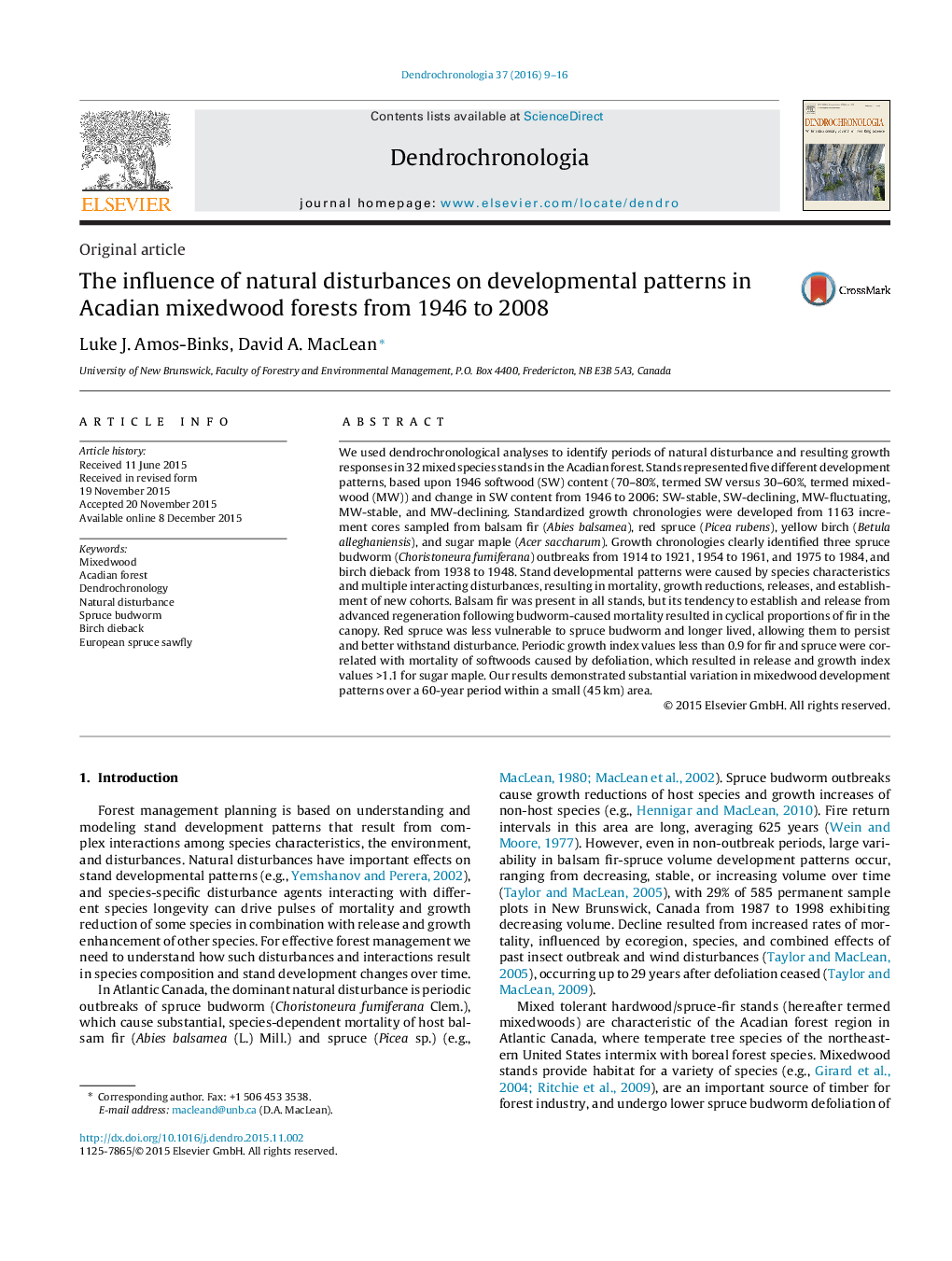| Article ID | Journal | Published Year | Pages | File Type |
|---|---|---|---|---|
| 85542 | Dendrochronologia | 2016 | 8 Pages |
We used dendrochronological analyses to identify periods of natural disturbance and resulting growth responses in 32 mixed species stands in the Acadian forest. Stands represented five different development patterns, based upon 1946 softwood (SW) content (70–80%, termed SW versus 30–60%, termed mixedwood (MW)) and change in SW content from 1946 to 2006: SW-stable, SW-declining, MW-fluctuating, MW-stable, and MW-declining. Standardized growth chronologies were developed from 1163 increment cores sampled from balsam fir (Abies balsamea), red spruce (Picea rubens), yellow birch (Betula alleghaniensis), and sugar maple (Acer saccharum). Growth chronologies clearly identified three spruce budworm (Choristoneura fumiferana) outbreaks from 1914 to 1921, 1954 to 1961, and 1975 to 1984, and birch dieback from 1938 to 1948. Stand developmental patterns were caused by species characteristics and multiple interacting disturbances, resulting in mortality, growth reductions, releases, and establishment of new cohorts. Balsam fir was present in all stands, but its tendency to establish and release from advanced regeneration following budworm-caused mortality resulted in cyclical proportions of fir in the canopy. Red spruce was less vulnerable to spruce budworm and longer lived, allowing them to persist and better withstand disturbance. Periodic growth index values less than 0.9 for fir and spruce were correlated with mortality of softwoods caused by defoliation, which resulted in release and growth index values >1.1 for sugar maple. Our results demonstrated substantial variation in mixedwood development patterns over a 60-year period within a small (45 km) area.
